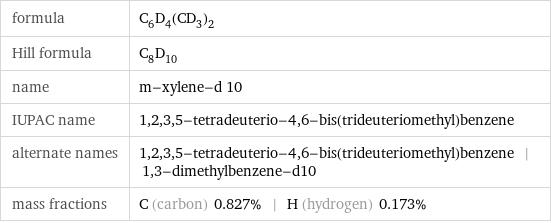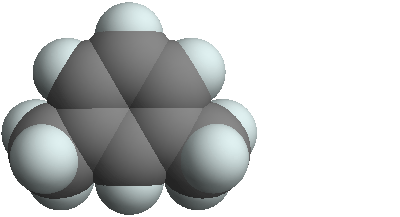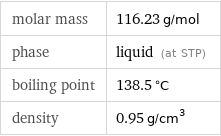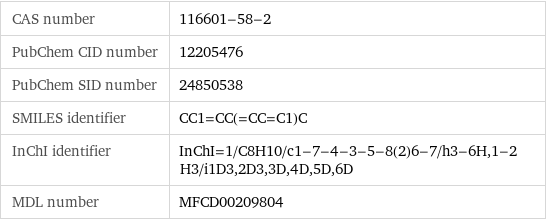Input interpretation

m-xylene-d 10
Chemical names and formulas

formula | C_6D_4(CD_3)_2 Hill formula | C_8D_10 name | m-xylene-d 10 IUPAC name | 1, 2, 3, 5-tetradeuterio-4, 6-bis(trideuteriomethyl)benzene alternate names | 1, 2, 3, 5-tetradeuterio-4, 6-bis(trideuteriomethyl)benzene | 1, 3-dimethylbenzene-d10 mass fractions | C (carbon) 0.827% | H (hydrogen) 0.173%
Lewis structure

Draw the Lewis structure of m-xylene-d 10. Start by drawing the overall structure of the molecule, ignoring potential double and triple bonds: Count the total valence electrons of the carbon (n_C, val = 4) and hydrogen (n_H, val = 1) atoms: 8 n_C, val + 10 n_H, val = 42 Calculate the number of electrons needed to completely fill the valence shells for carbon (n_C, full = 8) and hydrogen (n_H, full = 2): 8 n_C, full + 10 n_H, full = 84 Subtracting these two numbers shows that 84 - 42 = 42 bonding electrons are needed. Each bond has two electrons, so in addition to the 18 bonds already present in the diagram add 3 bonds. To minimize formal charge carbon wants 4 bonds. Identify the atoms that want additional bonds and the number of electrons remaining on each atom: Fill in the 3 bonds by pairing electrons between adjacent highlighted atoms. Note that the six atom ring is aromatic, so that the single and double bonds may be rearranged: Answer: | |
3D structure

3D structure
Basic properties

molar mass | 116.23 g/mol phase | liquid (at STP) boiling point | 138.5 °C density | 0.95 g/cm^3
Units

Liquid properties (at STP)

density | 0.95 g/cm^3 refractive index | 1.497
Units

Non-standard atom properties

H-2 | 10
Chemical identifiers

CAS number | 116601-58-2 PubChem CID number | 12205476 PubChem SID number | 24850538 SMILES identifier | CC1=CC(=CC=C1)C InChI identifier | InChI=1/C8H10/c1-7-4-3-5-8(2)6-7/h3-6H, 1-2H3/i1D3, 2D3, 3D, 4D, 5D, 6D MDL number | MFCD00209804
Safety properties

flash point | 25 °C